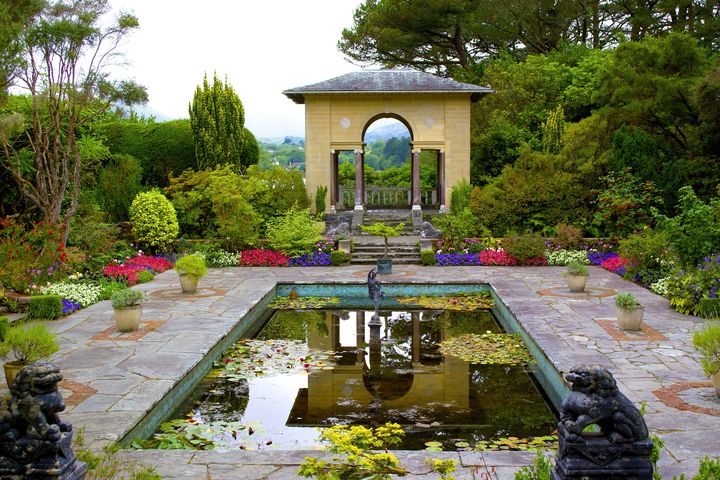Its beauty when still a barren rock captured the attention of a wealthy northerner, John Bryce. He and his wife, Violet, began to dream of creating a garden in this warm, moist location and, in 1910, he set about the Herculean task. Hundreds of tonnes of topsoil were shipped to the island and a shelter belt of pine trees and griselinia was established.
The couple had met the distinguished British garden designer Harold Peto while on a cruise ship and commissioned him to plan the plot. Work soon commenced on laying out Peto’s Italianate design and thousands of plants were shipped to the island. The couple embraced the idea of their new garden being a space to experiment with gardening possibilities, planting species which would be challenged elsewhere on these islands.

The collection consisted primarily of Southern Hemisphere species, including champion leptospermums, kauri pines, myrtle, dacrydium, drimys and callistemons. Alongside these were summer-flowering magnolias and rhododendrons as well as tree ferns and cyatheas, all which flourished in the sub-tropical island micro-climate. But the financial fortunes of the Bryce family weren’t flourishing, and while the gardens were beautifully developed, plans for a grand house were shelved.
Generations of garden lovers have subsequently made the short but magical boat journey from Glengarriff through shimmering waters past basking seals to the island’s small jetty. And it became one of our most-loved gardens to visit. However, over the past decade or so, the gardens became a little tired, with the planting losing much of its finesse.
Recently, there’s been a reawakening as a set of new eyes and enthusiasm has come from across the bigger pond to take the helm. Mancunian Glyn Sherratt is a renowned head gardener. His last position was heading the team at Holker Hall, a 36-acre estate made up of formal and informal gardens, which is the home of the Cavendish family in the Lake District, Cumbria.
Sherratt’s wife is from Co Kerry and, devastated by the Brexit vote, they began to look for an opportunity to come “home”. So where did Sherratt start this mammoth garden rejuvenation? Initially, it was the basics, fixing or replacing decomposing metalwork, clearing overgrown pathways, unblocking drains and organising a waste management system. After that, it was the introduction of a robotic lawn mower.
Only then could he set to work to understand the plant collection that Ilnacullin still had. He felt it was difficult to move a garden forward until you knew what you were working with, so Sherratt went through the archives, examining diary entries, plant receipts and any other documentation — not an easy task, as he describes the Bryces’ handwriting as hieroglyphical. Armed with a machete, he attacked the undergrowth to uncover what plants had survived the neglect and thrived.
The griselinia was smothering more interesting species. is thriving and liberally self-seeding so Sherratt and his excited team are planning to thin out these and introduce rare cultivars such as the white-flowered . Working on an island garden can be interesting.
The final part of his daily commute from Kerry is by boat. At 8am each morning, the gardeners’ craft leaves Glengarriff with seven horticulturalists on board. And at the end of the day, the retreat back to the mainland can be fraught — everybody has to check and double-check they have car keys and mobile phones for the journey home.
Sherratt loves his new island garden and, once he has reinvented the space, is determined that his legacy will be to bring on the next generation of Ilnacullin gardeners. Among the stars that caught my eye in the flora of Garinish Island was this sub-tropical plant, Feijoa. Also known as the pineapple guava, it’s an evergreen shrub which is in flower at the moment.
The flowers have white and red petals with prominent red stamens. It originates in Brazil and Argentina, where it will produce a gauva-like edible fruit. Grow here in full sunshine in a sheltered position.
I start feeding mine in April, Sonia, and I use a diluted liquid seaweed feed sprayed on to the fronds and watered into the crown every two weeks until mid-September..



















